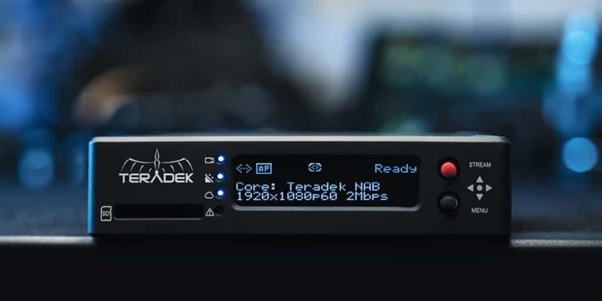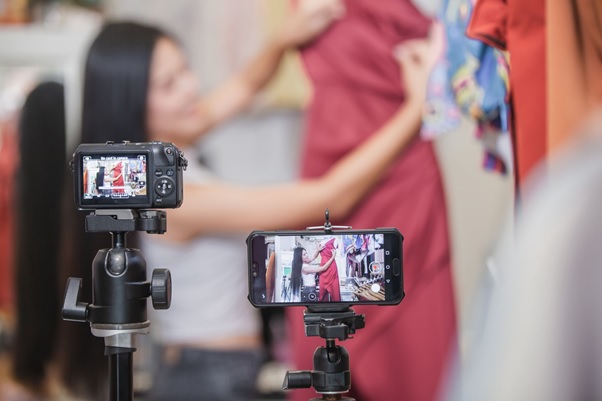Technology Behind Live Casinos
Last year saw an immense boost in live streaming and these days, almost anyone can connect to a live stream and use it for a variety of things. In the casino industry, live casinos provided a virtual replacement for the brick-and-mortar casinos that many could no longer attend. It was safer and more effective for those taking part and dealing at the casino tables.
Table of Contents
The Live Stream Components
Successful live streaming requires four components, namely the video and audio source, video encoder, a location to stream from, and a reliable internet connection. The stream will not work if one of these elements is missing, and you will not be able to broadcast your material.
Video and Audio Source
The video and audio source refers to the cameras, computers, and any other equipment that can emit images. Microphones, mixer feeds, and any sounds to be played in your stream will be referred to as audio.
Cameras
Entry-level video cameras are typically less expensive and lighter. However, with less expensive cameras, you’ll need optimal lighting situations to make up for the lack of video quality. They also don’t have any manual controls and have rudimentary connections. These cameras will fetch around $300 and $700.
The mid-range option is consumer video cameras. At this level, the image quality improves. With HDMI as a standard option, connectivity is adequate but not professional-grade. Although there are a few manual controls, it doesn’t have the ergonomics and customization that a fully pro-level camera has. These cameras cost between $800 and $3,000.
Pro-connectors such as XLR and SDI are included in professional video cameras. They often have massive, high-resolution sensors that deliver exceptional image quality even in low-light situations. They have a more robust build quality and manual controls, making them more durable. The prices of these cameras range from $1,500 to $25,000 and beyond.
When playing roulette at a live casino, the table typically has three cameras: one for an overview, one for photos of the table, one for images of the wheel, and the third for a picture in picture display. Special HD or 4K cameras with high frame rates are used in live casinos to provide the best slow-motion action.

Audio Equipment
Audio quality is an extremely important component to perfect for good quality live streaming. The user experience can still be pleasant if a live streaming video stutters as long as the audio quality stays high. The most important lesson here is to pay attention to the audio.
Compared to the built-in microphones in entry-level video cameras or phones, a simple 3.5mm lavalier mic can significantly increase audio quality. Upgrade to a high-quality 3.5mm microphone for even better results. However, if you want to get the best audio quality, XLR microphones are the way to go. XLR microphones are the industry standard for quality and longevity.
Video Encoder
Encoders are the final key piece of live streaming equipment. Video encoding is the process of compressing video files so that they are saved as a single continuous video rather than discrete images. Engineers designed video encoding so that all the information could be compressed without sacrificing quality.
The Game Control Unit is another component of the live casino studio, and many believe it is an essential part of the entire live casino broadcasting process. Each table game has a Game Control Unit attached to it. Game control devices enable the live casino studio’s video broadcasting to be encoded. The Game Control Unit is an integral part of live casino games since it allows dealers to manage each game individually.
Hardware Encoders
Hardware encoders are dedicated processors that encode video and data into streamable information using a pre-programmed algorithm. These live streaming encoders are available in both small, portable units and bigger, permanent fixtures. They can handle a wide range of inputs, though HDMI and SDI are the most common.
They’re usually made to last and can handle continuous video streaming without crashing, making them perfect for business use. There are several specialized hardware encoders on the market that enables live stream video from remote areas using battery power and 4G LTE connectivity.

Software Encoders
Computer programs that run on a laptop or a desktop computer are known as software encoders. To collect video, filmmakers use software encoders in conjunction with a capture card or other methods of connecting their cameras to their computers.
Accessories
You’ll need a range of various live streaming devices to bring your production together. Cables, tripods, batteries, and other miscellaneous items such as light stands will be included.
These add-ons will help you get the most out of your live streaming setup for your business. The need for accessories will vary depending on the subject matter of your live stream.
A tripod is the most critical piece of equipment for any live streaming project. You don’t want your camera to tumble off its makeshift tripod, resulting in shaky footage.
Conclusion
Once you’ve got all of the above components, you’ll need to set up your audio hosting platform and video solution to your encoder. Next, you’ll need to set up the connections, arrange the stream, and establish a link between the encoder and the live streaming software solution.
That’s it! You’ll be able to hit record once you’ve linked everything and the world can engage with your content. Now, you also know what it takes to present such amazing quality when you’re playing your favorite live casino games.

